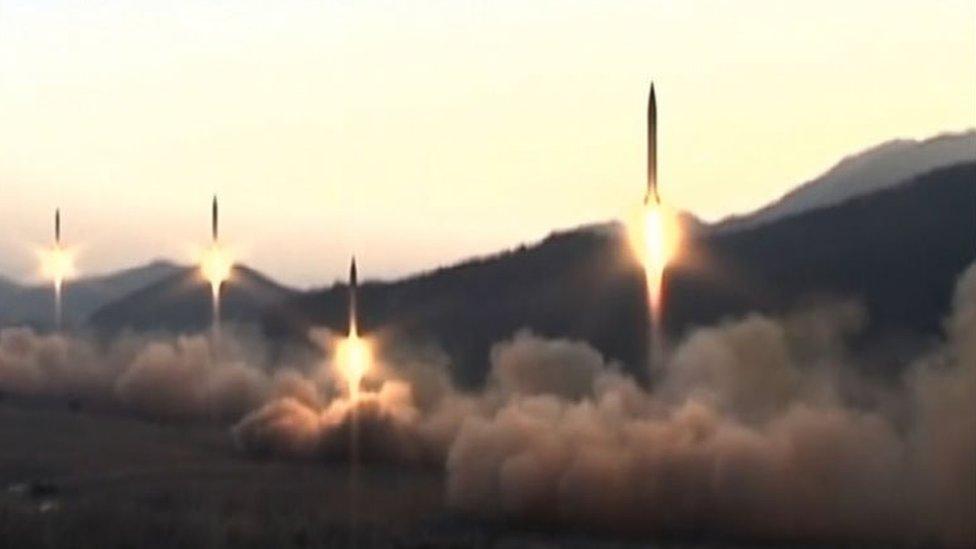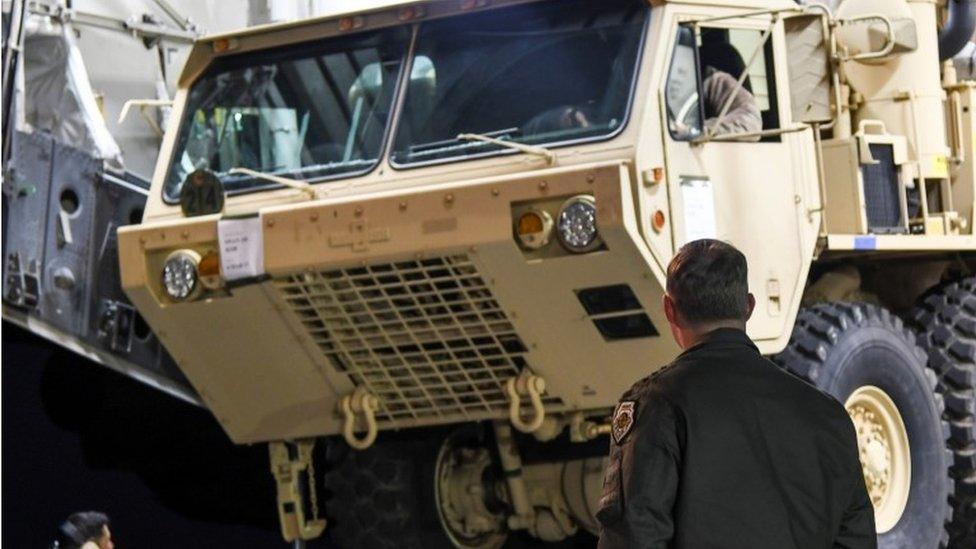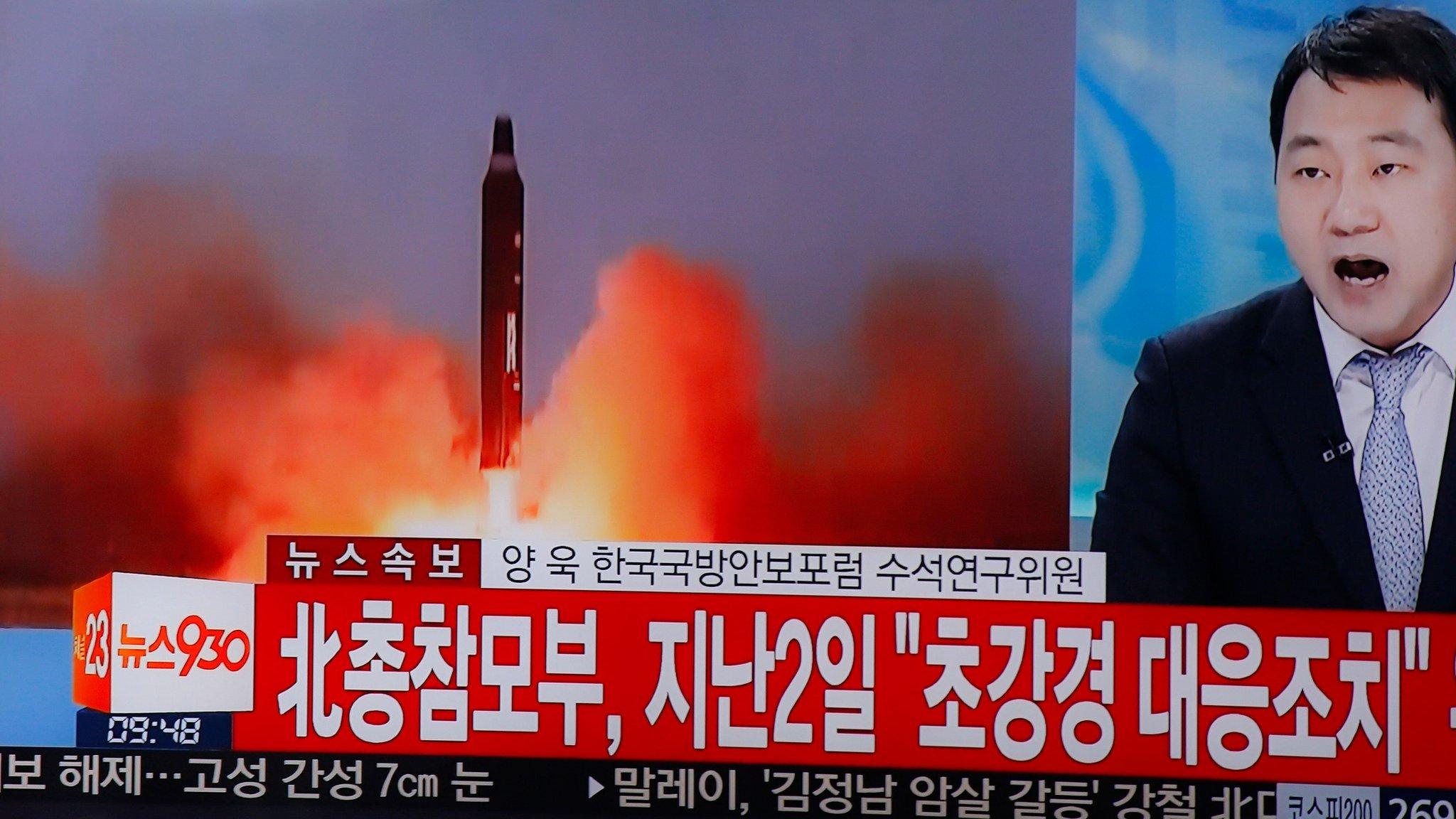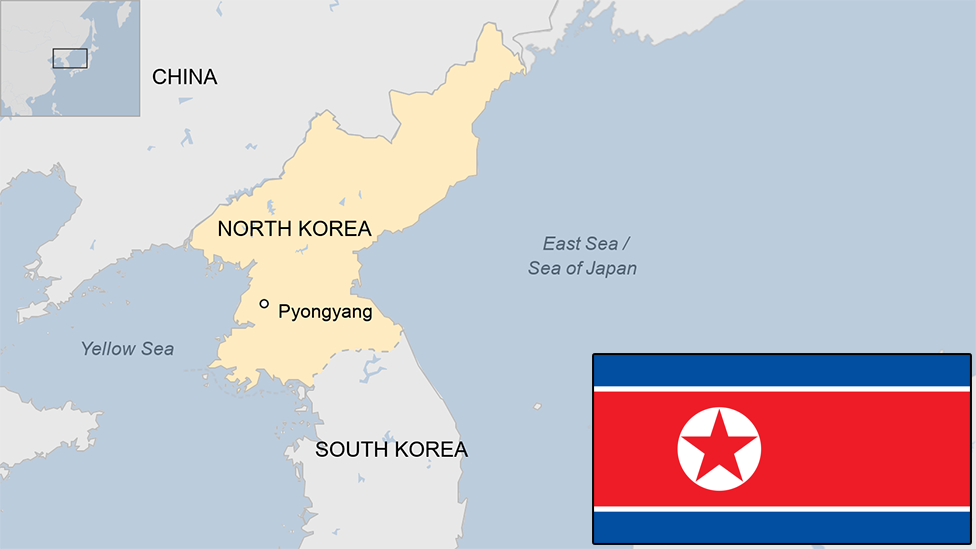China calls on N Korea to suspend missile and nuclear tests
- Published
- comments

North Korea state media has broadcast footage purporting to show the missiles being launched
China has proposed North Korea suspend tests of missile and nuclear technology to "defuse a looming crisis".
Foreign Minister Wang Yi said that in exchange, the US and South Korea could halt annual joint military drills, which consistently infuriate the North.
The appeal came after North Korea test-launched four missiles on Monday, breaking international sanctions.
But the US later said it was not "a viable deal", accusing leader Kim Jong-un of "irresponsible arrogance".
The US began rolling out a missile defence system in South Korea in response to the latest tests.
'Head-on collision?'
Speaking on the sidelines of China's annual parliamentary meeting, Mr Wang said the Korean peninsula was like "two accelerating trains, coming toward each other with neither side willing to give way".
"Are the two sides really ready for a head-on collision?" he asked.
A mutual halt of military operations would be the first step towards easing tensions and reopening negotiations, he said.
But US state department spokesman Mark Toner later said that China's proposal was not a viable deal.
He said: "This is apples and oranges. What we're doing in terms of our defence co-operation with South Korea is in no way comparable to the blatant disregard that North Korea has shown with respect to international law."
US Ambassador to the United Nations Nikki Haley said that "all options were on the table", but said of Mr Kim: "We are not dealing with a rational person. It is an unbelievable, irresponsible arrogance that we are seeing coming out of Kim Jong-un at this time."
Three of the North Korean missiles came down inside Japan's exclusive economic zone (EEZ) on Monday, prompting Japan's Prime Minister Shinzo Abe and US President Donald Trump to say the region had entered "a new stage of threat".

An unlikely offer: By John Sudworth, BBC News, Beijing

It is almost certainly not going to work. The US-South Korean joint exercises have been an annual fixture for the best part of two decades and North Korea's demands for the drills to be scrapped are always rebuffed.
At a time when Pyongyang is believed to be inching ever closer to developing nuclear warheads, Washington and Seoul are more than ever unlikely to be in the market for a grand, symbolic gesture.
So why would China join its neighbour's call for such a bargain? And why now? It may be that Wang Yi is conveying a genuine offer from Pyongyang and, in the role of an honest broker, is willing to give it a go however narrow the odds.
Or perhaps by calling Washington's bluff over the military exercises - casting President Trump as a man unwilling to make compromises in the name of peace - China itself sees some strategic advantage.

The UN Security Council earlier strongly condemned the launch in a unanimous statement, calling it a grave violation of North Korea's international obligations, which risked destabilising the region.
The Council, which will meet later on Wednesday, also threatened to "take further significant measures" against North Korea, which could imply efforts to introduce a fresh round of sanctions.
Meanwhile, the US again sought to reassure Beijing over deployment of an extensive missile defence system in South Korea.
The Terminal High-Altitude Area Defense system (Thaad) is designed to protect South Korea, and US troops based there, from North Korean missile attacks. The first elements of it were moved into place on Tuesday, hours after the North's latest launch.

What is the Terminal High Altitude Area Defense System (Thaad)?
Shoots down short and medium-range ballistic missiles in the terminal phase of their flight
Uses hit-to-kill technology - where kinetic energy destroys the incoming warhead
Has a range of 200km and can reach an altitude of 150km
US has previously deployed it in Guam and Hawaii as a measure against potential attacks from North Korea

1. The enemy launches a missile
2. The Thaad radar system detects the launch, which is relayed to command and control
3. Thaad command and control instructs the launch of an interceptor missile
4. The interceptor missile is fired at the enemy projectile
5. The enemy projectile is destroyed in the terminal phase of flight
The launcher trucks can hold up to eight interceptor missiles.


The Thaad deployment, originally agreed under the Obama administration, is controversial.
South Koreans living in areas which will host defence batteries are concerned they could become targets.
China has said its radar capabilities go far beyond what is required for defence and represents an encroachment of US military power and that it will "resolutely take necessary measures to defend our own security interest".

The first parts of the defence system have now arrived in South Korea
- Published6 March 2017

- Published10 August 2017
- Published19 July 2023
